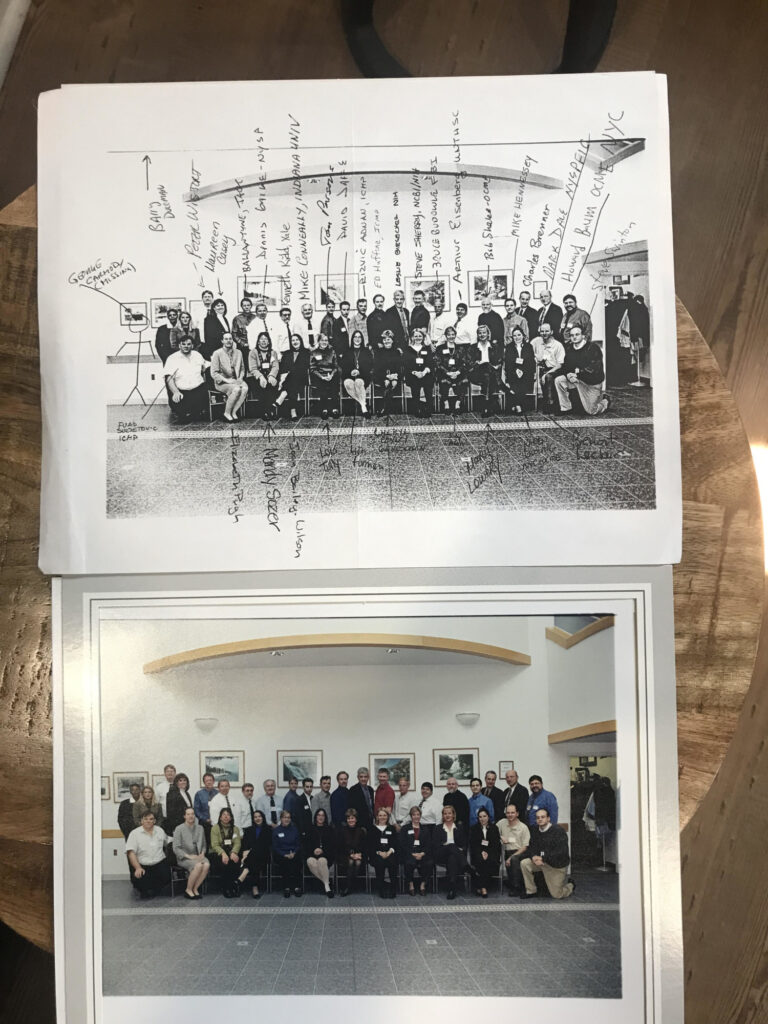On September 11, 2001, I was the Inspector in Charge of the New York State Police Laboratory System. September 11 started similar to most days at 7:00 AM meeting with staff to discuss expedited cases, backlogs, upcoming trials, FOIA requests, accreditation QCARs and QPARS, training, professional meetings, DNA databank, Laboratory Information Management System (LIMS) implementation, new hirings, retirements and the never ending daily tours. At 8:14 AM United Airlines flight 175 departed from Logan airport in Boston with 56 passengers, 7 flight attendants and two pilots. The Boeing 767-222 was scheduled to fly from Boston to Los Angeles. At approximately 8:42 AM flight 175 at 30,000 feet almost directly over the NYSP laboratory in Albany, New York went off course and made a left turn headed south to New York City. (Board, 2002)
Written by: w. Mark Dale, MBA, ASQCQA, Inspector, New York State Police (Retired)
At 9:03 AM, flight 175 collided with the south tower of the World Trade Center. All laboratory staff were speechless fixated in horror watching the tragedy unfold on any television or computer monitor that could be found in the laboratory.
On September 12, I contacted Dr. Bob Shaler, Director of the NYC Office of Medical Examiner DNA laboratory, and asked how the NYSP laboratory could provide assistance. Bob suggested a visit to review laboratory operations.
On September 13, NYSP Superintendent James McMahon, Administrative Officer William Callahan and I were on a NYSP helicopter headed straight down the Hudson River headed for NY city. Eerily, similar to the same flight path as United Flight 175. As we approached the Manhattan west side landing facility it was apparent that air space was secured and limited to only military and law enforcement traffic. US Navy and Coast Guard gun boats patrolled the Hudson River. The plume of heave smoke from the collapsed towers was drifting eastward over Manhattan and Queens. There were significant concerns the plume could contain debris from a dirty bomb with radiological, chemical hazards or bacterial pathogens.
We first met with Dr. Bob Shaler and Dr. Charles Hirsch (NYCOME Chief Medical Examiner). Dr. Hirsch was seated at his desk in a casual short sleeved shirt exposing his forearms covered with stitches that resulted from being struck by debris from the collapse of the second tower. Dr. Hirsch is one of many that left his office and rushed towards the scene of the collapse of the first tower in an effort to provide assistance. He was struck by debris from the collapse of the second tower. We asked how the NYSP laboratory could provide assistance to his laboratory in an effort to identify victims. Dr. Hirsch replied “Mark, just take a look around and suggest how you can help in any way”. His response was the first step of a massive interagency collaboration of laboratory resources.
We started our “look around” on 30 street next to the NYCOME building. There were approximately 10 autopsy tables with overhead tent canopies and ME staff removing victims from body bags and conducting autopsies. Approximately every hour refrigerated box trucks would deliver more victims from ground zero. Autopsies would stop and all NYCOME staff and bystanders would salute the approach of each additional truck loaded with victims.

I noticed the staff performing the autopsies would extract a small tissue sample from a victim, place the sample in a test tube, place the tube in a rack and affix an adhesive bar code to each tube. We decided to follow the rack. A technician took the rack up the elevator to the 6th floor DNA laboratory. At the entrance to the DNA laboratory a staff member wrote the barcode number into a bound leger. At that point I realized the NYCOME required a Laboratory Information Management System with bar code capabilities. The NYSP laboratory had just completed the installation of a LIMS with full bar code and document management capabilities.
I advised Superintendent James McMahon we could install a LIMS similar to ours for management of victim samples and control exemplars for comparison. Superintendent McMahon advised: “Do it and let me know whatever you need to get it done.”
Three weeks later we drove to NYCOME with a dozen computers, bar code readers, printers and scanners all loaded with LIMS software. The PorterLee Beast™ LIMS system supported by PorterLee™, IT contractors, NYSP IT, NYSP laboratory scientists, and University at Albany MBA IT management graduate student interns are all responsible for making this happen. Laboratory staff, including Dr. Allison Eastman, travelled to NYCOME and keyboard entered thousands of exemplars in the LIMS system. Within one month the WTC LIMS sample databank was current.
The next challenge was performing complex mixture and familial DNA profile comparisons between dirty, degraded mixtures from WTC victims and victim known exemplars extracted from victim’s personal items. In 2001 familial source attribution statistical analyses comparisons were not commonly performed in any forensic laboratory. The solution was for the NYSP laboratory in Albany to receive and analyze all known exemplars submitted from victims’ families such as toothbrushes, razor blades, hats, combs etc. The NYCOME laboratory would perform analyses on all tissue samples collected from autopsies. A CODIS similar network and software was then established between the NYCOME and NYSP laboratories to be used for comparisons. False identifications or exclusions were not an option.
We immediately became aware that the number of sample analyses and statistical familial comparisons between victim samples and known exemplars from personal belongings had never been done before on this scale or scope. We required immediate assistance from experts from the forensic laboratory and academic communities specializing in forensic molecular biology, statistics and IT management. We also needed assistance to coordinate the collaboration of this select forensic expert community in the most efficient and effective manner. A call was made to NIJ to provide assistance assembling and facilitating this unprecedented effort of mass disaster victim identification. NIJ immediately delivered the support needed to nurture and sustain KADAP (Kinship and Data Analyses Panel) and software tools which continue to this day identifying WTC911 victims bringing closure to families of the WTC911 disaster.
WOULD YOU LIKE TO SEE MORE ARTICLES LIKE THIS? SUBSCRIBE TO THE ISHI BLOG BELOW!
SUBSCRIBE NOW!


